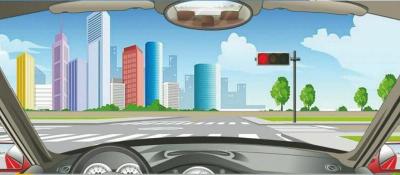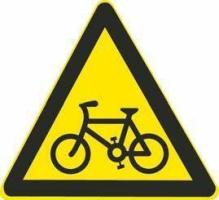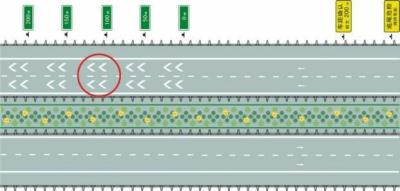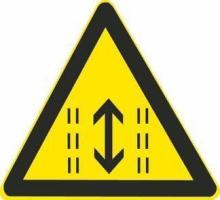1、At this position, the motorized vehicle can continue to go through if the front wheels have passed the stop line.

A、Right
B、Wrong
Answer:B
2、When encountering non-motorized vehicles intending to bypass a stopping vehicle, the driver should ________.
A、Honk to indicate them to yield
B、Yield to them
C、Speed up and bypass
D、Follow them closely and honk
Answer:B
3、May not drive if _____
A、the window is not closed
B、the door is not closed
C、the audio device is not closed
D、the roof window is not closed
Answer:B
4、Whats the meaning of this guide arrow?

A、indicate going straight or turning right
B、indicate turning right or making a U turn
C、indicate going straight or changing to right lane
D、indicate going straight or making a U turn
Answer:A
5、When encountering stopping in turn or slow-moving vehicles in front at an intersection where lanes are reduced, the motorized vehicle should _________.
A、enter the intersection from road shoulder by the right side of the vehicle in front
B、enter the intersection from the side of interspace
C、pass alternately with one vehicle each lane to enter the intersection
D、change to left lane and cut in to enter the intersection
Answer:C
6、What should the driver do when encountering a vehicle from the opposite direction on a road without a central line?
A、driving closely by the roadside
B、driving by the central of the road
C、reducing speed and driving by right side
D、run by using the lane for non-motorized vehicles
Answer:C
7、If a motorized vehicle hits a building or a public facility, the vehicle may leave the scene right away.
A、Right
B、Wrong
Answer:B
8、Whats the meaning of this sign?

A、the lane for non-motorized vehicles
B、yield non-motorized vehicles
C、no passing for non-motorized vehicles
D、watch for non-motorized vehicles
Answer:D
9、Do not hang or place articles close to the front and rear windows that block the vision of the driver.
A、Right
B、Wrong
Answer:A
10、This traffic light means ______

A、intersection warning
B、no passing
C、draw attention
D、allow to pass
Answer:D
11、Which is correct if a vehicle breaks down and is difficult to move?
A、turn on the hazard lights
B、turn on all the lights of the vehicle
C、forbid the passengers to get off
D、place a warning sign in front of the vehicle
Answer:A
12、What kind of marking is the yellow broken line in the center of the road?

A、indicative marking
B、prohibitive marking
C、warning sign
D、auxiliary marking
Answer:A
13、Whats the meaning of this sign?

A、embankment road
B、cliffside road
C、waterside road
D、slippery road
Answer:A
14、Whats the meaning of this sign?

A、dangerous hillside road
B、cliff section
C、watch for dropping stone
D、dangerous section
Answer:C
15、What marking is the white polylines in the circle?

A、ascertaining the distance between the vehicles
B、driving at reduced speed
C、ascertaining the speed of the vehicles
D、reducing the speed at the intersection
Answer:A
16、When a vehicle starts up, the driver should observe the traffic conditions and begin to start up after making sure it is safe to do so.
A、Right
B、Wrong
Answer:A
17、When finding a vehicle in the opposite direction having difficulty to go forward and needing to borrow road while crossing each other, the driver should ________.
A、Not occupy the road of the other side and should go forward normally
B、Indicate the other side to stop and yield
C、Speed up and go forward by the right side
D、Yield to the other side as much as possible
Answer:D
18、Whats the meaning of this sign?

A、watch for two-way road
B、driving by either side of the road
C、watch for variable lane
D、variable lane
Answer:C
19、When a vehicle on the main road approaches a conjunction with a feeder road, the driver should ______ in order to prevent a collision with a vehicle that suddenly enters from the feeder road.
A、Maintain the normal speed
B、Reduce speed in advance, observe and drive with care
C、Honk and swiftly pass
D、Speed up in advance and pass
Answer:B
20、It lights if left door is not closed.

A、Right
B、Wrong
Answer:B